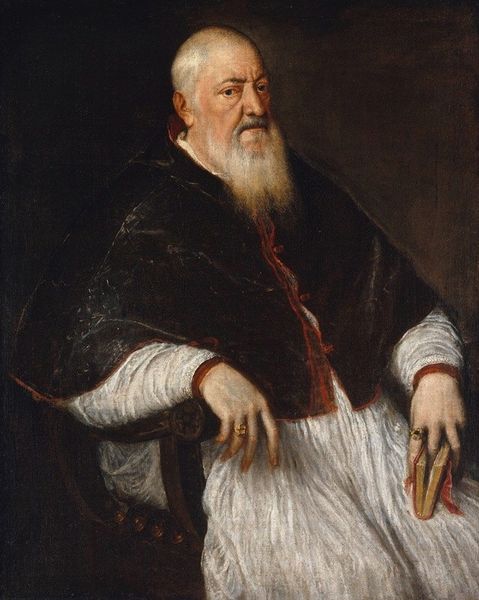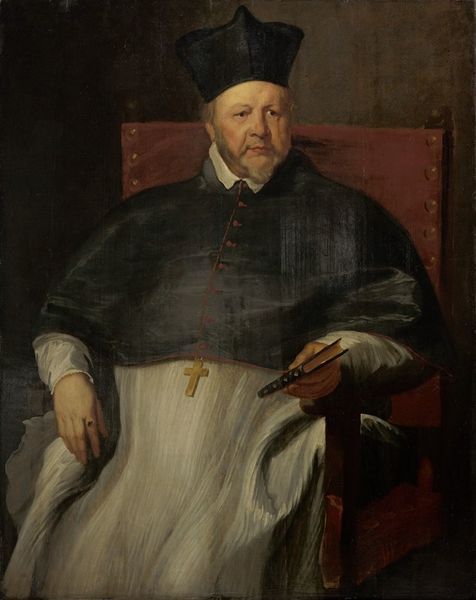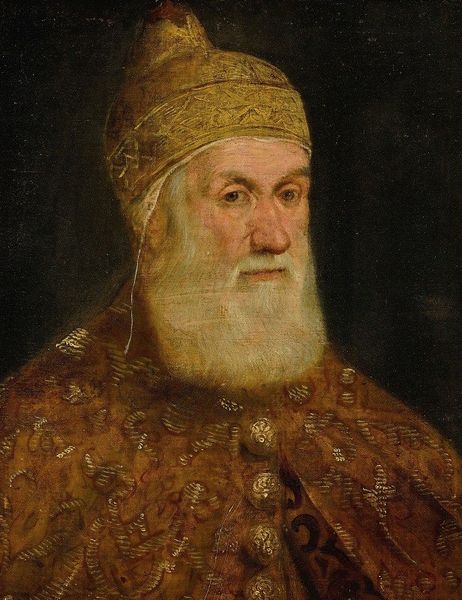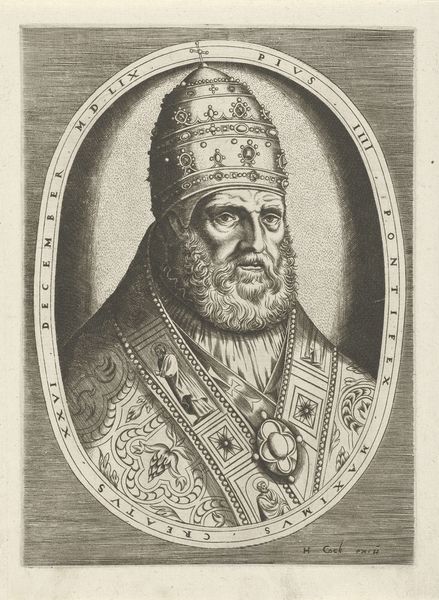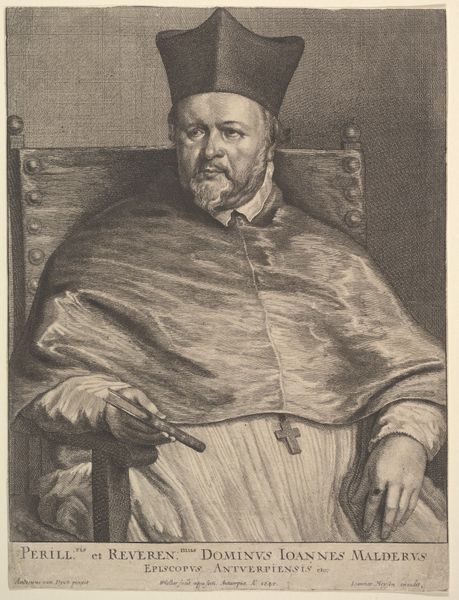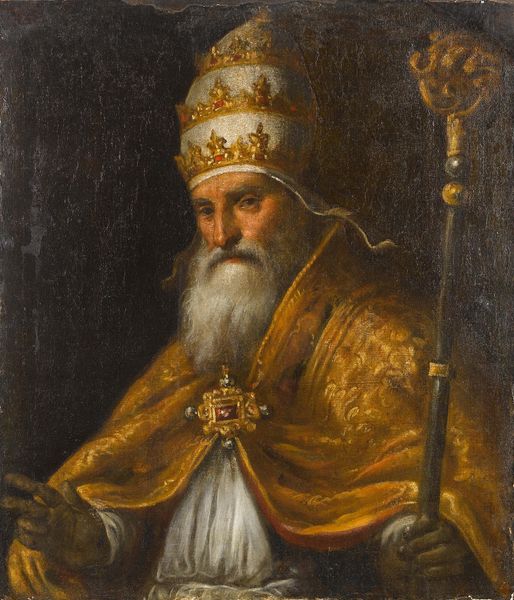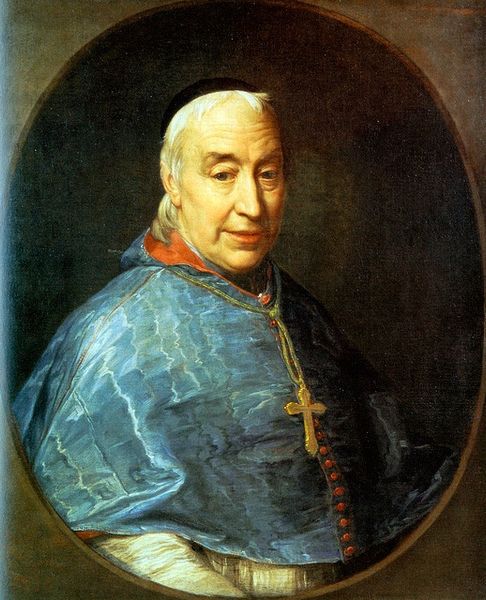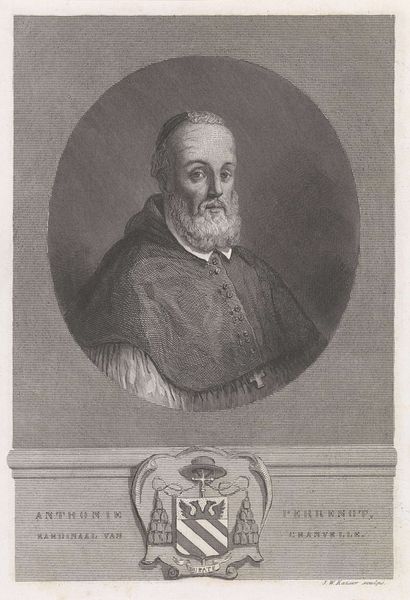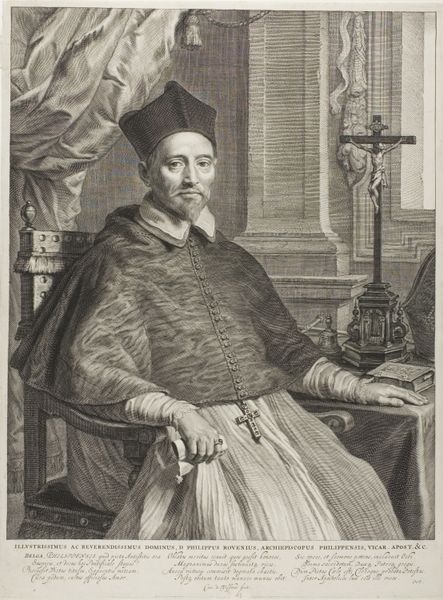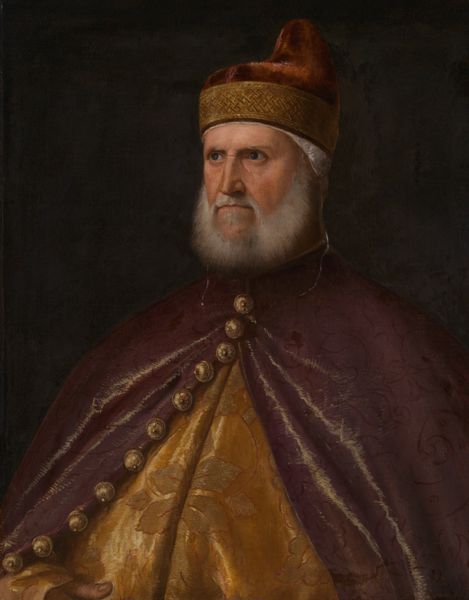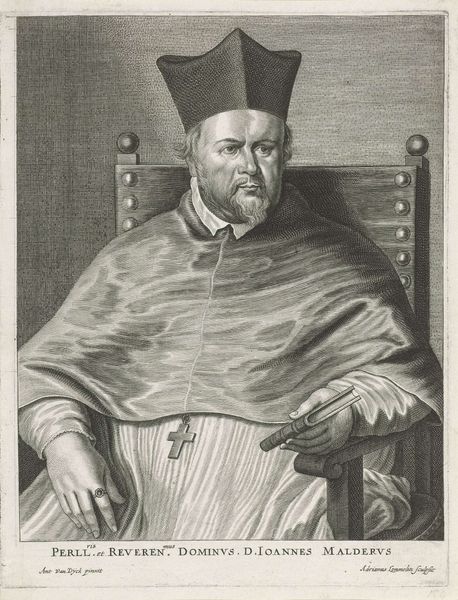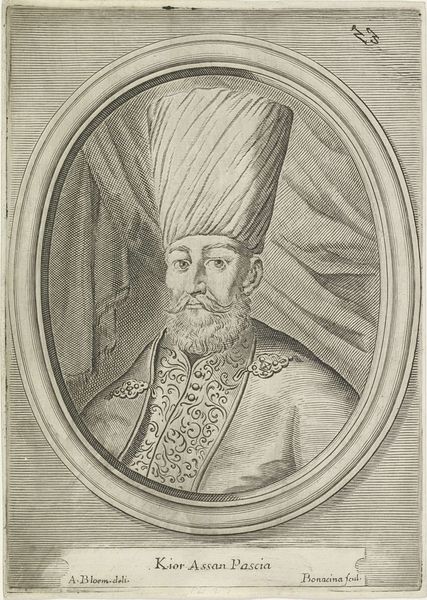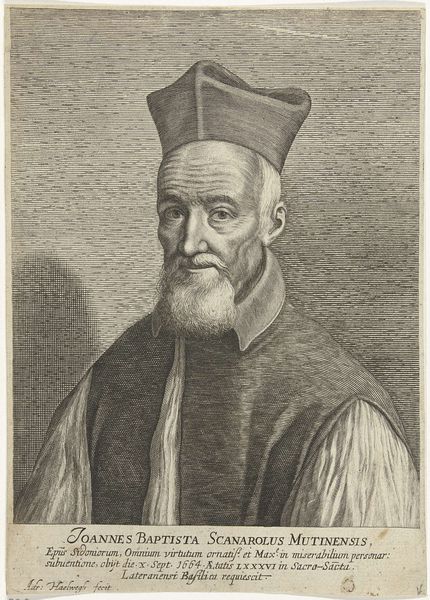
painting
#
portrait
#
portrait
#
painting
#
romanticism
#
history-painting
Dimensions: 72 x 58 cm
Copyright: Public domain
Curator: Here we have Dmitry Levitzky’s “Portrait of Priest, Peter Levitzky,” painted in 1812, currently residing in the Tretyakov Gallery in Moscow. What are your initial impressions? Editor: Somber. Dignified, definitely. But it's really about the play of textures, isn’t it? The contrast between the softness of his beard and the stark, almost industrial smoothness of that head covering. I'm also struck by how the materiality and labor inherent in that metallic cross, and the intricate chain link, adds layers of social significance. Curator: Absolutely. Consider the period—1812, Napoleon’s invasion of Russia. The clergy played a significant role in galvanizing the population, solidifying the Church's standing in the sociopolitical landscape. It's interesting to note how art became a tool for propagating the desired self-image of influential social figures, in service of that moment of Russian national history. Editor: The details certainly give it away! I find it hard not to wonder about the material conditions of portraiture at the time, the laborious preparation of pigments and canvas, the commissioning process. This piece serves both as a testament to artistic skill but it also captures that moment when those materials and conditions served an ideal of religious authority. I'm particularly intrigued by the rendering of the garments—likely expensive textiles meant to impress, right? Curator: Exactly. The visual language reinforces a carefully crafted message, highlighting Peter Levitzky's elevated status. In his time, commissions were vital in defining who would be remembered and how. So it’s about historical preservation through the cultural institution of art, the subject matter also having his place cemented in religious historical records. Editor: And there's a certain irony, isn't it? Using earthly, crafted materials to depict a man dedicated to spiritual matters. It emphasizes the tangible efforts, not just spiritual. I notice in the handling of light—see how it glints off the metal of the cross, that small flourish really underscores the material value alongside its symbolism. Curator: Good eye. In my view it really places the value of craftsmanship as central to understanding a certain ideal within 19th century Russian society. These displays in museums are not so distant from when those same displays and portraits might have defined social prestige, patronage networks, or status that was used for sociopolitical advantages. Editor: It seems this particular portrait weaves a narrative, combining skill, social commentary, material culture into a powerful image of authority. Curator: Indeed, understanding this work opens a wider lens into the political landscape of early 19th-century Russia and also invites us to question these notions of public imagery today.
Comments
No comments
Be the first to comment and join the conversation on the ultimate creative platform.
